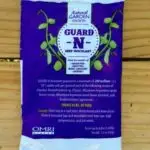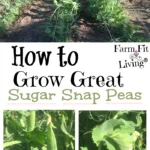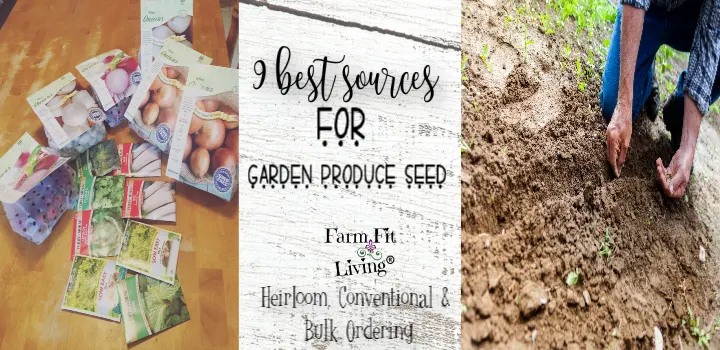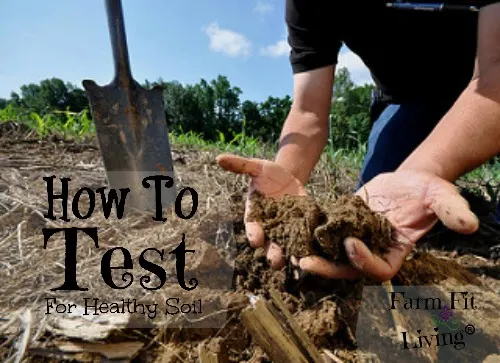Are you looking for the best ways to grow great sugar snap peas that will be sweet, cool and crisp?
Sugar snaps are one of my all-time favorite veggies to grow in the garden. So, you’d better believe that I take great pride in growing LOTS and LOTS of peas that will be tasty all through the year.
One of the reasons I just LOVE to grow great sugar snap peas is because they are one of the very first crops you can harvest. As a cool season veggie, peas can be planted early and they thrive in the spring temperatures. Plus, they are delicious.
So, in this post, I will share:
- My best tips for how to grow great sugar snap peas.
- Different types and nutrition facts of snap peas.
- How to preserve peas to enjoy later.

What Varieties to Grow Great Sugar Snap Peas?
There’s many varieties of sugar snap peas on the market, but how do you choose?
My favorite one to plant here in Kansas, is Little Marvel. Some other varieties include Knight, Mr. Big, and Green Arrow. Some Southern varieties that tend to grow better in warmer climates include Sugar Bon and Super Sugar Snap. All of these varieties are early maturing varieties, which means they will be ready in no time! Literally!
The following post gives you more information about how to choose the best garden seeds for your location and spot. Although experimentation is always fun, it’s always a good idea to plant varieties that are already working well in the area that you live in.
Starting Seeds Indoors
Peas can totally be germinated indoors and then transplanted outside. I have done this and it worked great!
At the bottom of this post (related posts) is my transplant post that will tell you everything you need to know about growing transplants from seed. You’re basically just germinating the seeds in a warmer environment for a head start.
Although it’s fun to work ahead and get that head start, you definitely want to make sure that the temperature outside is right for the plants you’re planting. It’s a good thing that peas love cooler weather. They will do just fine transplanted in the spring.
Let’s talk about planting peas outdoors in the proper seed or plant bed.
Before You Plant…
There are a few things you need to do to the soil before you plant peas. As I’ve mentioned, peas are legumes and use a bacteria called Rhizobium. You can increase this bacteria by leaving organic matter on the soil when you’re not using it. But also, you can apply a powder to the seed before planting or in a granular form:

Another skill is to soil test your seed bed before planting. I’ve mentioned that peas are one of the earliest veggies you can plant in the spring. BUT, if planting seeds, you should make sure the temperature of the soil is at least 40 degrees F. This is so important. Don’t get in too big of a hurry.
Check out related posts below for my post on checking soil temperature. It’s an important post and skill you need to know for best germination and growing results!
Another skill you need to learn about is soil testing. You need to make sure your soil bed is right for peas. The pH should be between 6 and 6.5 and optimal fertility levels. Here’s my post all about soil testing:
Once you get your soil test results, you may need to apply some fertilizer. Since peas are a legume, they don’t need as much nitrogen as other veggies would. But, the Phosphorous and Potassium levels might be low. Therefore, a pre-planting application of 5-10-10 fertilizer can be set out at 3 pounds per 100 square feet.
Planting Specs to Grow Great Sugar Snap Peas
Peas love to grow in full sun! Full time sun exposure is not only best for the plants but it helps the plants make more sugar. This will help with the flavor of the peas you’ll be eating. YUM!
Once you know where you’ll be planting your peas, you’ll need to know how deep to plant them. If you’re planting seeds, plant them about 1/2 inch deep. The spacing of the seeds should be 2 inches apart and rows 1-2 feet apart.
Planting in wide rows also allows the pea plants to cling together and support each other. It also helps shade the plants’ roots and keep them cool. And it helps you to be able to get into the rows and control the weeds. Let’s talk about some more care tips for your pea plants.
Care of Your Pea Plants
As your pea plants grow, they will want to find each other. They will want to grab other plants and tangle up together. Isn’t this lovely?
Well, not always. If plants get too heavy, they will fall over. You will want to try trellising them for support. Use a fence, wire or twine to build next to the plants for them to climb up.
Another way to control weeds is to mulch them. You can use your own organic weed-free material or straw. A great mulch will not only control weeds but it will help to keep pea plant roots cool (Important for cool-season plants)!
Finally, be sure your peas are getting enough water. If your garden spot isn’t getting the rainfall, you’ll need to provide some water. The critical time period is when the plant is growing baby peas, after blooming.
So, ideally, peas should be watered in the early morning so that the foliage will be dry before dark of the day. This will help keep the ground from being too damp, thus freezing or molding at night.
Let’s talk about some more protection.
Protecting Your Peas
Pea plants are so delicate, which makes them delicious. I’ve had so much trouble with rabbits and even chickens in the past eating my baby pea plants! Not cool!
But a sturdy fence of chicken wire helped to keep those bunnies and chickens out. Here’s some common beneficial animals that can control control issues for your garden:
Beneficial wildlife can help protect your peas from aphids and other insects that can harm your pea plants.
Some other diseases you might see is powdery mildew and Fusarium wilt. These are both caused by over watering of your pea plants…So it’s really important to ONLY water when absolutely needed. And follow the recommendations above.
Continual care for your pea plants will result in a bountiful harvest! 🙂
Harvest Time
I know, I know. The moment you plant your peas, you’ll be dreaming of harvest. You’ll be visualizing all of those plants filled with pods plump full of sugary sweet peas.
But you’ll need to wait 55-70 days for that to happen. Which isn’t really as long as you might think.
Whichever varieties you choose to plant, the days to harvest should be on the bag. Typically, early varieties are ready to harvest in around 60 days. Mid-season varieties are generally ready in about 70 days.
Also, keep in mind of the pod development. The pods on the lower portion of the plants will be ready to pick first! Keep that in mind when checking your plants. You’ll need to pick up the plants and look at the bottom portion to find the pods that are tender and ready to pick.
What do the peas ready to pick really look like? For sugar snap peas, the pod will be plump and firm. The color should be bright green. You don’t have to pick peas everyday once harvest begins. Every 1 to 3 days will suffice. It totally depends on how the growing season is going and how healthy your plants are.
Finally, pick pods when the plants are dry. When harvesting, do not jerk pods from the vines as rough handling can cause plants to stop producing and even pull plants out of the ground. Use two hands, one to support the plant and the other to detach the pod.
Now you have all these peas! What are you going to do with them all?
Preserving Your Peas
I LOVE preserving peas to enjoy during the winter. I try to put up as many as possible.
You can pressure can your peas or freeze them. I love frozen peas in recipes and salads later, so that’s what I do. Here’s a video for how I blanche and freeze sweet peas:
Other Ways to Enjoy Peas
It shouldn’t be too hard but…It’s really important to eat or put up as soon as humanly possible.
This is because the sugary sweetness in peas quickly converts to an icky starch. You can store the fresh peas in the pods in the fridge for 2-3 days.
Are you wanting to learn how to pod peas? Watch this video I made for podding fresh sweet garden peas.
Nutrition Facts of Snap Peas
Not only are snap peas delicious. They are very nutritious as well.
Since they are full of sugar, they are a great good carbohydrate source. Not only that, but they are a great source of Vitamins A, K and C, thiamin, folate and protein!
What’s not to love?

Can You See Why I Love to Grow Great Sugar Snap Peas?
And they can quickly become your favorite, too. I hope this post has given you insight into how simple it is to grow great sugar snap peas.
What’s your favorite veggie to grow in the garden? Comment below with your answer.


Make Gardening Simple Now!

Simple gardening equals smart gardening. In this short, easy to read book, you'll get access to all the best practices and tips for gardening smarter and more successfully. If you want more information, I'll send it right to your email inbox!





PREVENTING LIFESTYLE DISEASES Living Longer And Maintaining Great Health
Sunday 17th of February 2019
Great article, just what I wanted to find.
Mindy Young
Friday 22nd of February 2019
Thanks! I'm glad you found it!